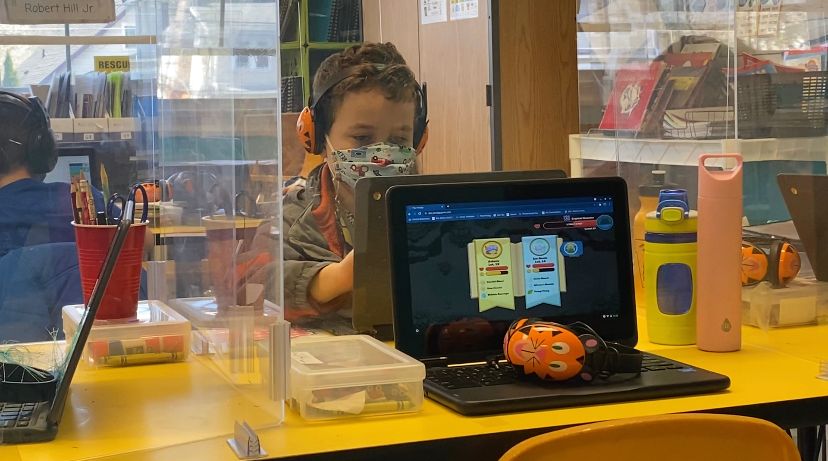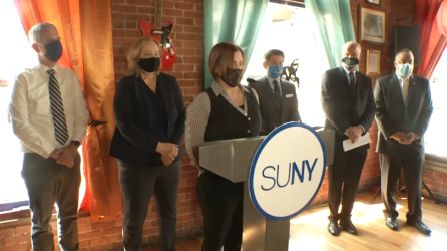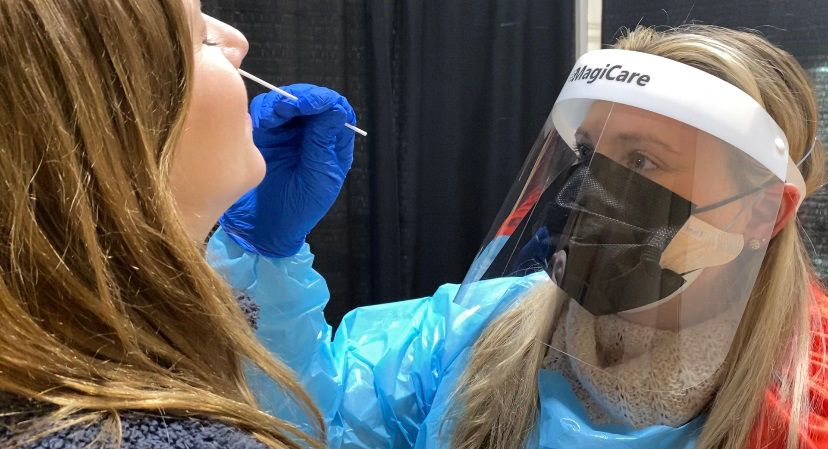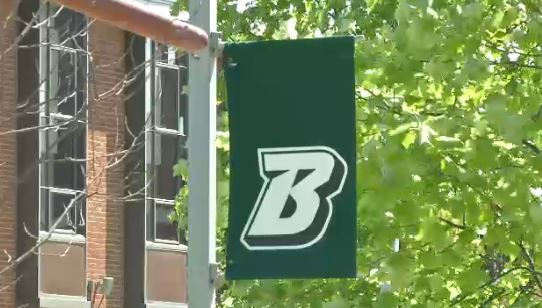With a sample loaded onto a brand-new piece of UVC technology, Sebastian Freeman is on his way to research that could change the world.
“We would put samples of virus, in this case we were using a substitute virus to sort of understand the effects of the UV system, and then collaborated with the University of Arizona to do actual testing on SARS-CoV-2 with the same system,” said Sebastian Freeman, biomedical engineering graduate student.
Freeman studies under Binghamton University scientists Kaiming Ye and Guy German. The two men just completed major research into how UVC technology could be used in the safest and most effective way to kill the COVID virus. While companies quickly began releasing UV disinfecting tools when the pandemic hit, these professors say none of them were regulated.
“We knew in the very early on stages because everybody was confused about it. Everybody bought the products but they basically have no idea whether it works, or does not work. They cause a lot of confusion and people are still concerned about it,” said Ye, BU biomedical engineering department chair.
Their research found that a lot of the cheaper UV disinfecting products out there could be the wrong wavelength. That means they’re either too weak to kill the virus, or so strong that they’re actually damaging your skin.
“It can mechanically degrade over with the radiation, and that means it’s a higher likelihood of cracking. Cracking, when you open your skin up, means the nasty stuff can get in, and that means we have a problem here,” said Guy, BU biomedical engineering graduate studies program director.
When nearby hospitals were running out of PPE at the start of the pandemic, German and Ye developed UV disinfecting stations to clean their gear. Freeman then helped develop this system, meant to test the best wavelength to kill the virus, while not hurting the user.
“When the pandemic first started, some of our research here was originally haulted, but I was looking still for way to participate, to be active, and I knew there was a growing need to help I’m this worldwide effort," said Freeman.
This tool is now on its way to the patent stage and could help regulate UVC products around the globe. It could also allow for a safer way to install UV lights in highly trafficked areas.
“Right now, we see zero. But as soon as I turn it on, we see what the intensity is of the UV light that’s being delivered,” said Freeman.











